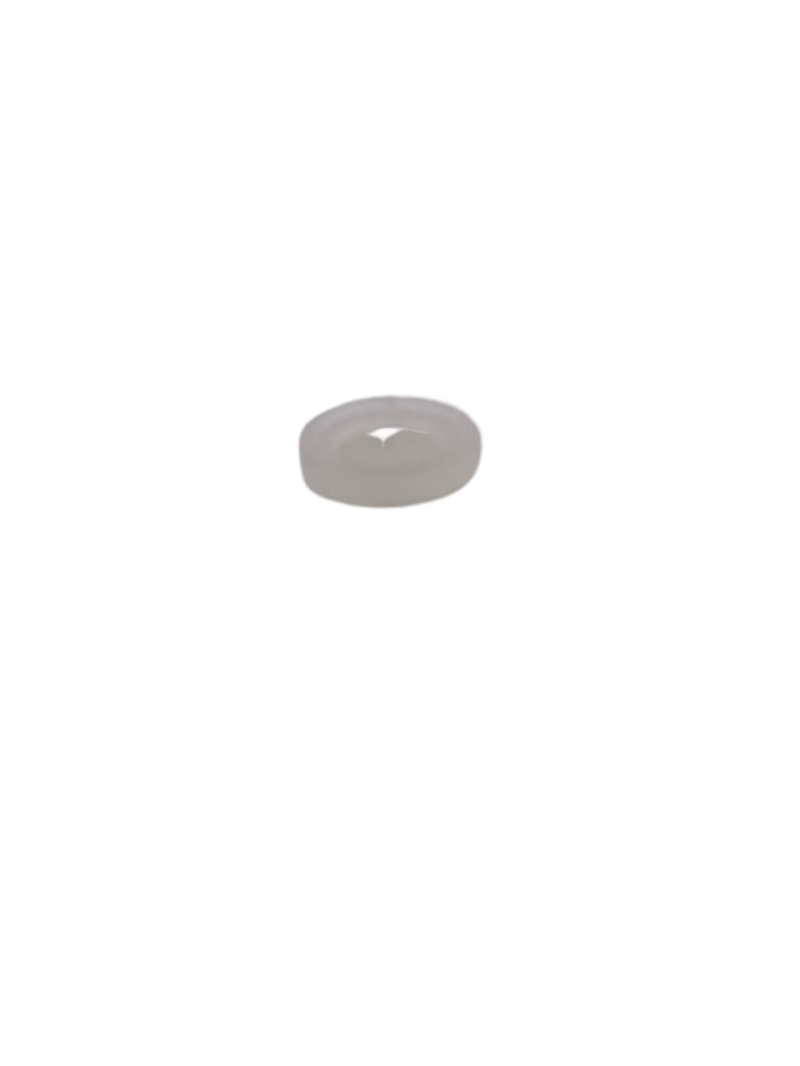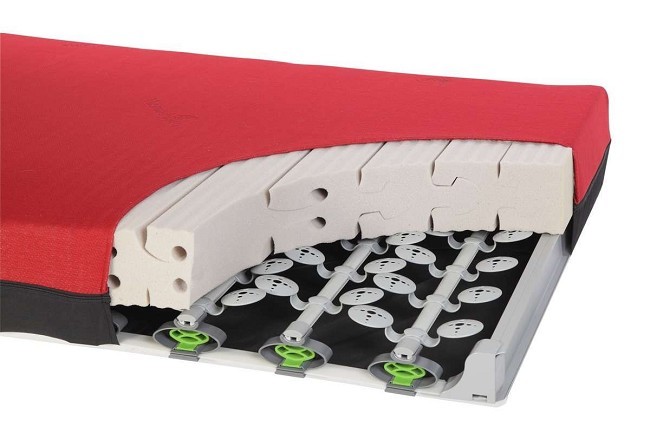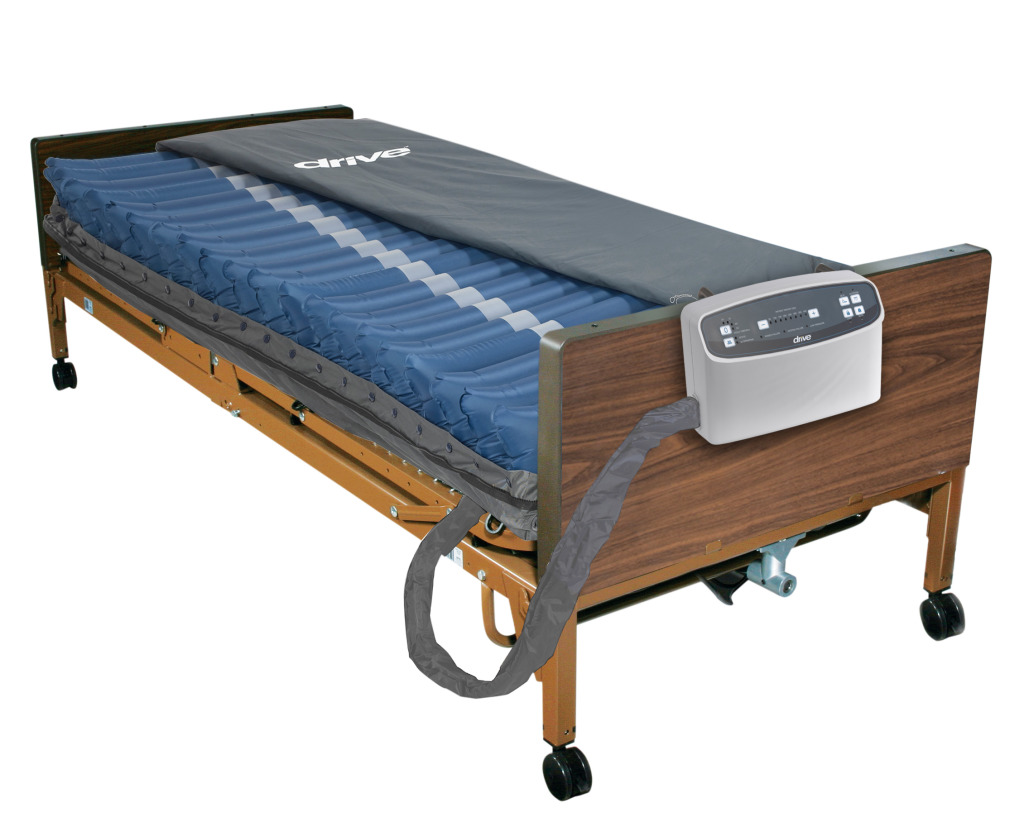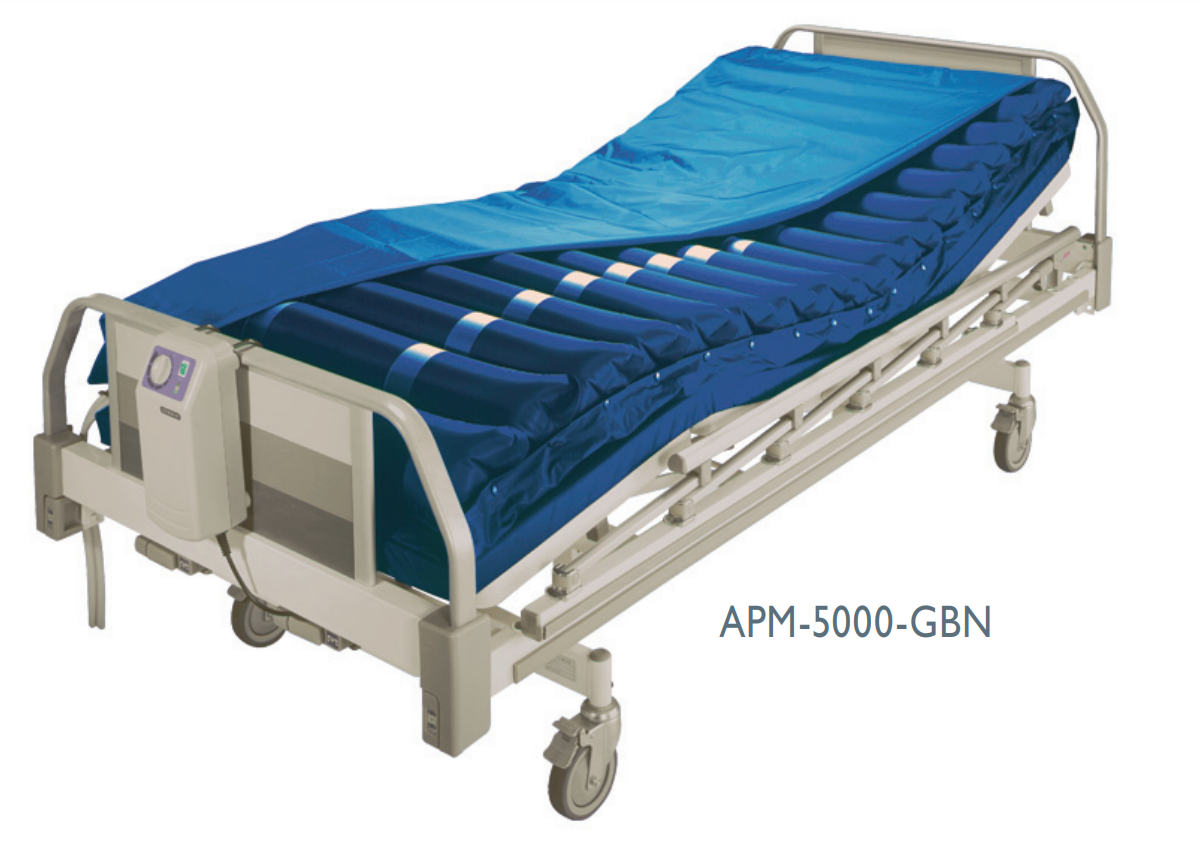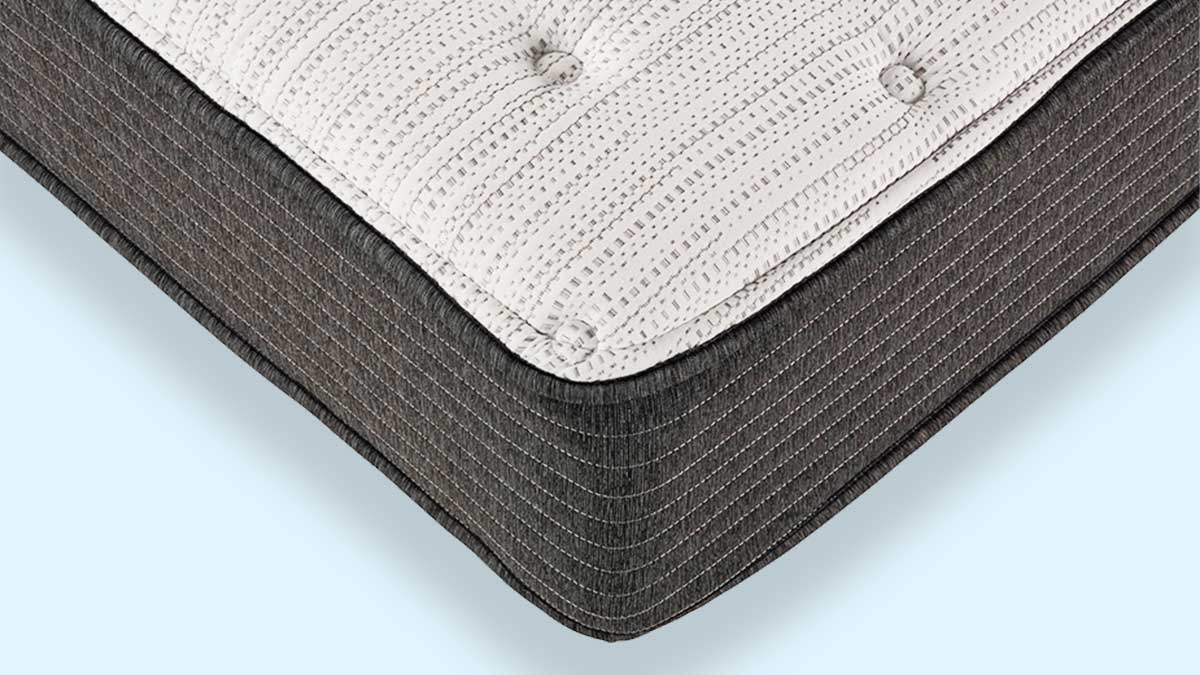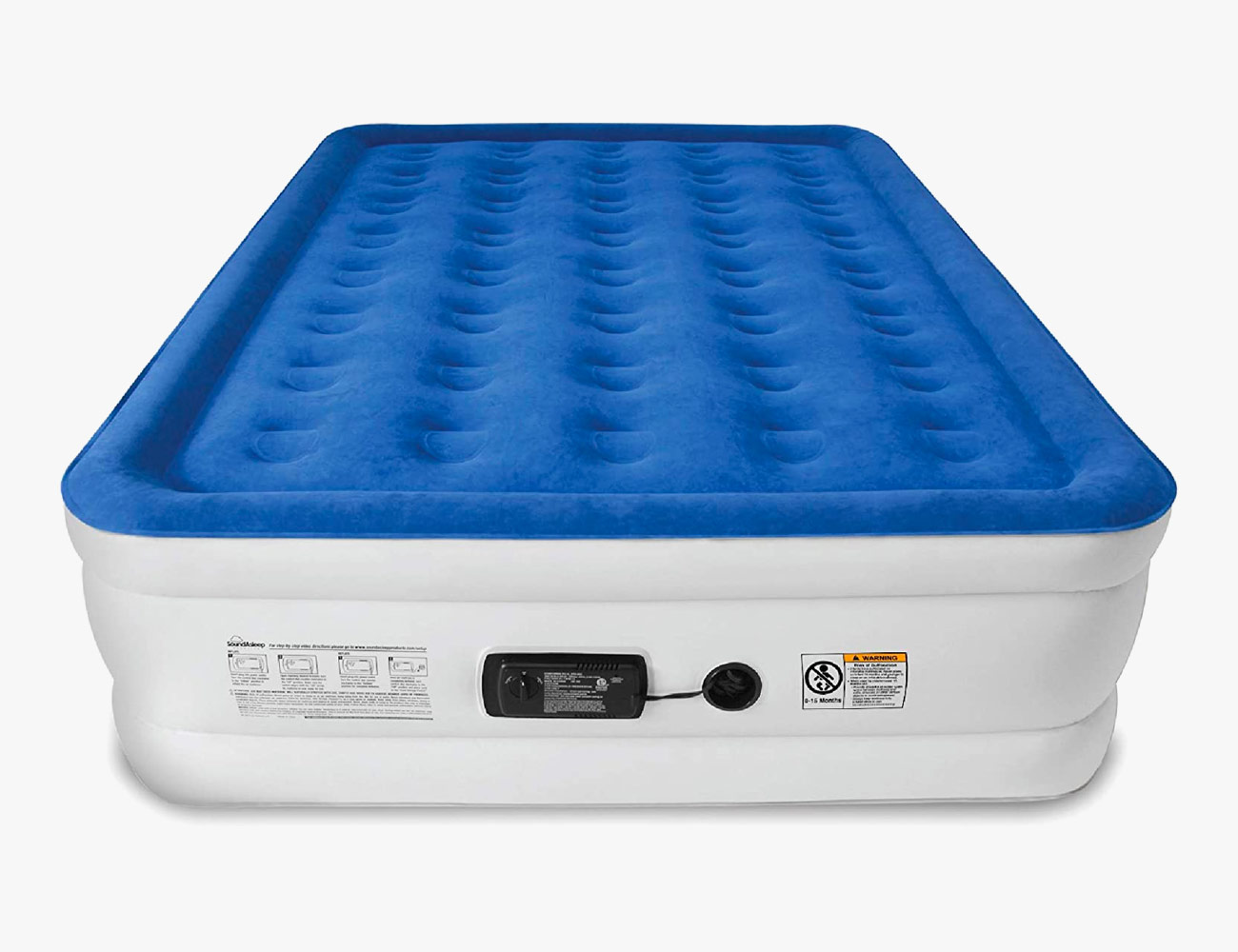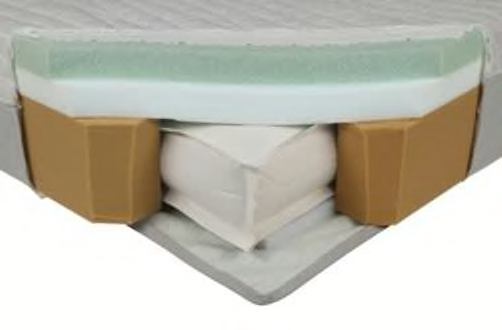1. Pressure Relief Mattresses
A pressure relief mattress is specifically designed to help prevent and treat bed sores. These mattresses use a variety of materials and technologies to distribute the weight of the body evenly, reducing pressure on vulnerable areas and promoting proper blood flow. They are an essential tool for those who are bedridden or have limited mobility, as they can greatly improve comfort and prevent the development of painful and potentially dangerous bed sores.
One of the most common materials used in pressure relief mattresses is memory foam, which conforms to the shape of the body and provides targeted support. This can help reduce pressure points and prevent the accumulation of moisture that can lead to bed sores. Some pressure relief mattresses also use air or water chambers to provide customizable levels of support and pressure relief.
When shopping for a pressure relief mattress, look for features such as high density foam, multiple layers for added support, and a waterproof cover for easy cleaning and maintenance. It is also important to consider the weight and mobility of the individual using the mattress, as some models may be more suitable for certain needs and preferences.
2. Alternating Pressure Mattresses
An alternative to traditional pressure relief mattresses is the use of alternating pressure mattresses. These mattresses have air-filled cells that alternate in pressure, mimicking the natural movement of the body and promoting blood flow. This can be especially beneficial for those who are at a higher risk of developing bed sores, as it helps to constantly shift pressure away from vulnerable areas.
One of the key benefits of alternating pressure mattresses is their ability to be adjusted to different levels of firmness and pressure. This can be helpful for individuals with varying needs or preferences, and can also be beneficial for those who are already experiencing mild bed sores. Some models also have additional features such as built-in pumps for easy inflation and deflation, and customizable pressure settings.
It is important to note that alternating pressure mattresses may not be suitable for those with certain medical conditions, so it is best to consult with a healthcare professional before making a purchase. They also tend to be more expensive than traditional pressure relief mattresses, so it is important to consider budget and individual needs when making a decision.
3. Low Air Loss Mattresses
Low air loss mattresses are another type of pressure relief mattress that use air-filled cells to distribute weight evenly and reduce pressure on vulnerable areas. However, they also have the added benefit of a system that continuously blows air through small holes in the surface of the mattress, creating a gentle airflow. This helps to reduce moisture and heat buildup, which can be a contributing factor to the development of bed sores.
Low air loss mattresses are particularly beneficial for those with existing bed sores, as they can help to speed up the healing process by keeping the affected area clean and dry. They are also suitable for individuals with limited mobility or those who are at a higher risk of developing bed sores. However, they tend to be more expensive than traditional pressure relief mattresses and may require additional maintenance in terms of replacing air filters and monitoring air pressure.
4. Gel Mattresses
Gel mattresses are a popular choice for those seeking pressure relief and comfort. These mattresses use a layer of gel, often in combination with foam, to provide support and alleviate pressure on vulnerable areas. The gel also helps to distribute body weight evenly, reducing the risk of developing bed sores. Additionally, gel mattresses are known for their cooling properties, making them a great option for those who tend to sleep hot.
One of the key benefits of gel mattresses is their ability to conform to the shape of the body, providing targeted support and pressure relief. They also tend to be more durable than traditional foam mattresses, making them a good investment for long-term use. However, gel mattresses can be quite heavy and may be more difficult to move or adjust compared to other options.
5. Foam Mattresses
Foam mattresses are a classic choice for those seeking pressure relief and comfort. They use layers of foam, often with varying levels of density, to provide support and conform to the shape of the body. Foam mattresses are known for their ability to reduce pressure points and promote proper spinal alignment, making them a great option for those at risk of developing bed sores.
When shopping for a foam mattress, look for features such as high density foam, multiple layers for added support, and a hypoallergenic cover for easy maintenance. It is also important to consider the weight and mobility of the individual using the mattress, as some foam mattresses may be more difficult to move or adjust compared to other options.
6. Memory Foam Mattresses
Memory foam mattresses are a popular choice for those seeking pressure relief and comfort. These mattresses use a type of foam that responds to heat and pressure, conforming to the shape of the body and providing targeted support. This can help to reduce pressure points and promote proper blood flow, making them an ideal choice for those at risk of developing bed sores.
One of the key benefits of memory foam mattresses is their ability to distribute weight evenly and reduce motion transfer, making them a good option for couples or those who share a bed with a caregiver. They also tend to be more durable and long-lasting compared to traditional foam mattresses, making them a good investment for long-term use.
7. Innerspring Mattresses
Innerspring mattresses are a common and affordable option for those seeking pressure relief and support. These mattresses use a network of steel coils to provide support and distribute weight evenly. They are known for their firmness and bounce, making them a great option for those who prefer a more traditional mattress feel.
When shopping for an innerspring mattress, look for features such as a high coil count and multiple layers of padding for added comfort and support. It is also important to consider individual weight and preference, as some may find an innerspring mattress too firm or uncomfortable for extended periods of time.
8. Adjustable Air Mattresses
Adjustable air mattresses are a versatile option for those seeking pressure relief and customizable support. These mattresses use air chambers that can be inflated or deflated to different levels of firmness, allowing for individualized comfort and pressure relief. They are a great option for those with varying needs or preferences, and can also be beneficial for those with existing bed sores.
One of the key benefits of adjustable air mattresses is their ability to be customized for different areas of the body. This can be particularly helpful for individuals who have specific pressure points or areas that require more support. Some models also come with adjustable bases, allowing for different sleeping positions and added comfort.
9. Water Mattresses
Water mattresses, also known as flotation mattresses, are a unique option for those seeking pressure relief and comfort. These mattresses use a layer of water, often in combination with foam, to provide support and reduce pressure on vulnerable areas. They are known for their ability to conform to the shape of the body and provide a weightless feeling, making them a great option for those with limited mobility.
One of the key benefits of water mattresses is their ability to distribute weight evenly and reduce pressure points. They are also known for their cooling properties, making them a good option for those who tend to sleep hot. However, water mattresses may require additional maintenance in terms of monitoring water levels and preventing leaks.
10. Bariatric Mattresses
Bariatric mattresses are specifically designed for individuals who are overweight or obese. These mattresses use a combination of materials and technologies to provide support and reduce pressure on vulnerable areas. They are an essential tool for those with limited mobility, as they can greatly improve comfort and prevent the development of painful and potentially dangerous bed sores.
One of the key features of bariatric mattresses is their high weight capacity, often ranging from 600 to 1000 pounds. They also tend to be wider and longer than traditional mattresses, providing more space for movement and positioning. Additionally, bariatric mattresses may have special features such as reinforced edges and extra support in certain areas to prevent sagging and discomfort.
The Importance of Choosing the Right Mattress for Bed Sores

What are Bed Sores?
 Bed sores, also known as pressure ulcers, are injuries to the skin and underlying tissue caused by prolonged pressure on certain areas of the body. These sores commonly occur in individuals who are bedridden or have limited mobility, as they are unable to shift their weight to relieve pressure on specific areas of the body. Bed sores can range in severity from minor skin irritation to serious, deep wounds that can be difficult to heal.
Bed sores, also known as pressure ulcers, are injuries to the skin and underlying tissue caused by prolonged pressure on certain areas of the body. These sores commonly occur in individuals who are bedridden or have limited mobility, as they are unable to shift their weight to relieve pressure on specific areas of the body. Bed sores can range in severity from minor skin irritation to serious, deep wounds that can be difficult to heal.
The Role of Mattresses in Preventing Bed Sores
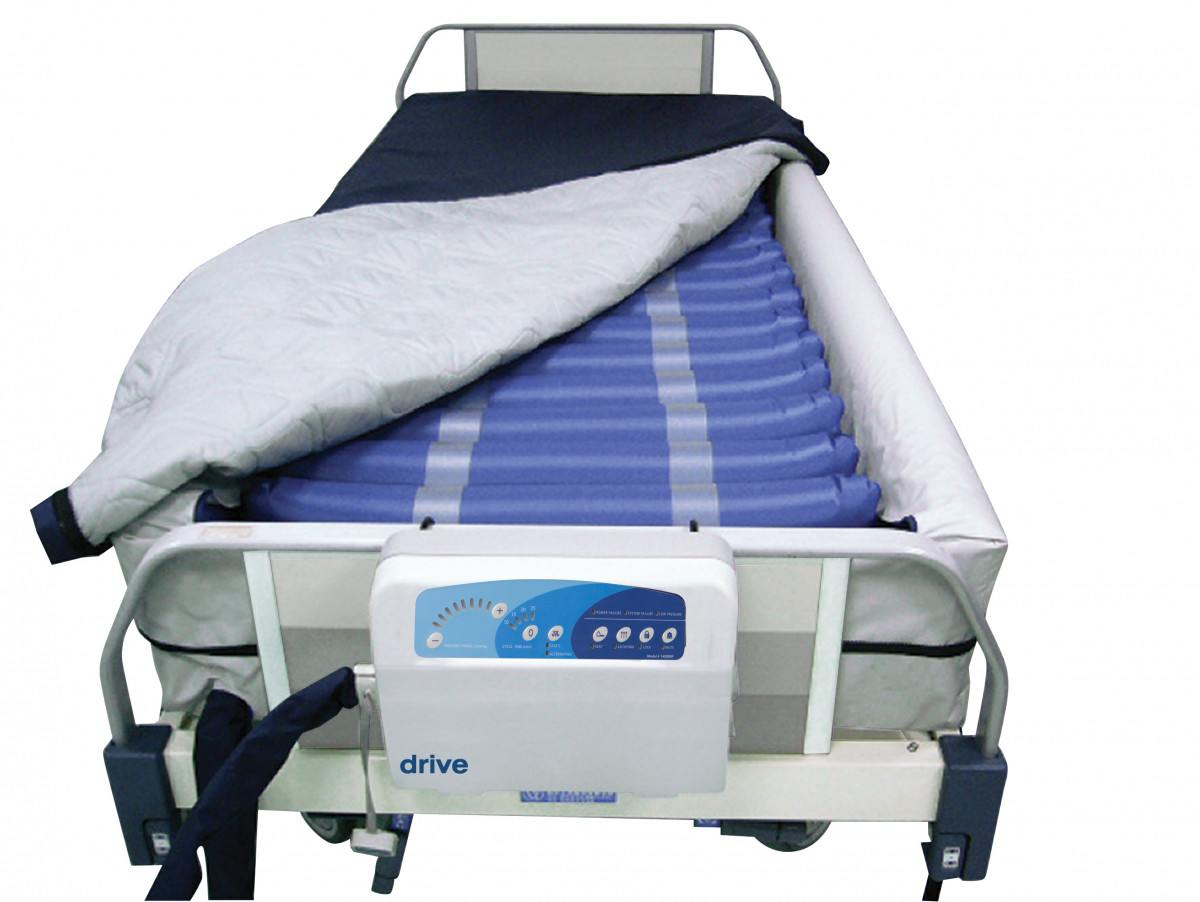 One of the most effective ways to prevent bed sores is to invest in a high-quality mattress.
Choosing the right mattress can make a significant difference in the prevention and treatment of bed sores
. A good mattress should provide support and comfort while also distributing weight evenly to reduce pressure on vulnerable areas of the body. Additionally, a suitable mattress should also be breathable and allow for proper air circulation, as this can help prevent moisture and heat buildup which can exacerbate bed sores.
One of the most effective ways to prevent bed sores is to invest in a high-quality mattress.
Choosing the right mattress can make a significant difference in the prevention and treatment of bed sores
. A good mattress should provide support and comfort while also distributing weight evenly to reduce pressure on vulnerable areas of the body. Additionally, a suitable mattress should also be breathable and allow for proper air circulation, as this can help prevent moisture and heat buildup which can exacerbate bed sores.
Types of Mattresses for Bed Sores
 When it comes to selecting a mattress for bed sore prevention, there are several options available that cater to different needs and preferences.
The top three types of mattresses recommended for bed sores are memory foam, adjustable air, and gel mattresses
.
When it comes to selecting a mattress for bed sore prevention, there are several options available that cater to different needs and preferences.
The top three types of mattresses recommended for bed sores are memory foam, adjustable air, and gel mattresses
.
Memory Foam Mattresses
Memory foam mattresses are made of a viscoelastic material that conforms to the body's shape, providing excellent support and pressure relief. These mattresses are ideal for bed sore prevention as they distribute weight evenly and reduce pressure on specific areas of the body.Adjustable Air Mattresses
Adjustable air mattresses allow for customizable firmness levels, making them a popular choice for individuals with bed sores. These mattresses also provide great support and can be adjusted to accommodate different body types and needs.Gel Mattresses
Gel mattresses are a newer type of mattress that contains a layer of gel on top of foam. This gel layer helps to dissipate heat and reduce pressure points, making them an excellent option for individuals prone to bed sores.In Conclusion
 In conclusion,
choosing the right mattress is crucial for preventing and treating bed sores
. It is essential to consider factors such as support, pressure relief, and breathability when selecting a mattress. By investing in a high-quality mattress and regularly changing positions while in bed, individuals can greatly reduce their risk of developing bed sores and promote better overall health and comfort.
In conclusion,
choosing the right mattress is crucial for preventing and treating bed sores
. It is essential to consider factors such as support, pressure relief, and breathability when selecting a mattress. By investing in a high-quality mattress and regularly changing positions while in bed, individuals can greatly reduce their risk of developing bed sores and promote better overall health and comfort.


